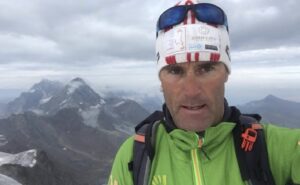Nepal’s Expedition Operators Association (EOA) has issued a first estimate of how many teams will climb the country’s 8,000’ers and most popular peaks. Not surprisingly, Everest and Lhotse have most of the action. So far, 353 international climbers — not including local staff — are expected to sign up for Everest and another 69 for Lhotse. Numbers will increase as other climbers confirm their plans and apply for permits.
Where will climbers flock this year?
Annapurna, Kangchenjunga, and Makalu will be also quite busy. As usual, Annapurna gets the first climbers of the season. The estimated number of Annapurna permits is 35. This is good but far from the crazy numbers of 2021. Here, in the middle of the COVID pandemic, 67 climbers summited in a single day. Teams joined forces, and logistics included helicopter resupplies to Camp 4.
This spring, Dhaulagiri will be rather quiet, with only one nine-member team from Seven Summit Treks and two independent climbing pairs (no details on their route or who they are).

8K Expeditions Everest Base Camp. Photo: 8K Expeditions/Facebook
As usual, the biggest teams belong to Seven Summit Treks, followed by a relatively new company, 8K Expeditions. The brand began just 18 months ago, but CEO Lhakpa Sherpa has worked in the industry for over 10 years. Lakpa told ExplorersWeb that they have over 60 international clients on their Everest and Lhotse expeditions, and over 80 climbing staff getting ready for the season with a week-long refresher course.
Outfitters require O2 at hand for no-O2 climbers
Last week, we ran a story about four women who intend to try Everest without supplementary O2. In the story, we mentioned the nuances of no-O2 climbs, such as the personal Sherpa assistants who often do all the tasks and carry some extra O2 in case of need.
Asian Trekking’s CEO Dawa Steven Sherpa made an interesting point. His client, Asmita Dorjee of India will indeed climb with a Sherpa who is on oxygen and will have an emergency bottle for her.
“Those are the conditions I insist for my clients who want to do it without oxygen,” Dawa Steven said.
The outfitter’s point of view, understandably based on preserving his client’s safety, opens an interesting debate. Following the latest trends in increasingly industrialized high-altitude tourism, the goal is to sell what once was an extraordinary achievement — summiting without bottled oxygen — but minimizing the factors that made it extraordinary.
When Viridiana Alvarez of Mexico states only nine women in history have summited Everest without O2, she is perfectly right. Equally, it is completely legit to try and become the 10th.
Same stats for changing tactics
If she succeeds, her achievements will be duly noted in mountaineering stats, without asterisks. But the circumstances in which she or any contemporary commercial climber achieves the feat will be significantly different than those experienced by Alison Hargreaves of the UK in 1995 or Gerlinde Kaltenbrunner in 2010.
In addition to no-O2, those women carried their own gear and had no Sherpa guide. Kaltenbrunner climbed with Ralf Dujmovits until Camp 3, and beyond that, on her own. Hargreaves did it totally independently, with no climbing partners.
Hargreaves had attempted the mountain a year before but turned around less than 500m below the summit when she decided the risk of frostbite was too high. Kaltenbrunner’s original plan for Everest was to climb up the Japanese and the Hornbein couloirs. She only turned to the normal route when conditions in the corridor proved too dangerous.

The late Alison Hargreaves on Everest. Photo: The Guardian
Special permits for Tibet?
There is no news yet from the China-Tibet Mountaineering Association about a possible opening of Tibetan peaks to foreigners. Nevertheless, Kristin Harila and Adriana Brownlee say they feel “very optimistic” that they could climb Shishapangma and Cho Oyu this spring.
“We have a good dialog with the authorities and I am positive we will get it,” Harila said on social media. The climbers must be aiming for a special permit similar to the one that Nirmal Purja received for his own Shishapangma climb in 2019.
Then there’s the question of money. Brownlee wrote on Instagram that the double climb’s cost in China has risen to $120,000. She was hoping for donations. Time is running out, as she is supposed to confirm her China plans by the end of today.
For Harila, the final bill would probably be even higher, since the Norwegian intends to climb both peaks twice. She would then attempt the other 12 8,000’ers “all over again so that [she] can do all 14 mountains twice in two seasons.”
In 2022, Harila climbed 12 out of the 14 peaks in an attempt to break Nirmal Purja’s speed record of six months and six days. (8000ers.com later noted Purja’s actual record was slightly over two years since he had not reached the true summits of Manaslu and Dhaulagiri on his first attempts.)
Harila has also mentioned that for her second round of 8,000’ers, she hopes to climb as many as possible without supplementary oxygen.
Everest North Side
Hope is quickly fading for the Tibetan side of Everest this spring. Lukas Furtenbach of Furtenbach Adventures, who had a team arranged for this quiet side of Everest, told ExplorersWeb: “We keep hoping as long as we have time. If the mountain remains closed for foreigners [by the expedition’s starting day on April 24], the North Side climbers will join our team on the South Side.”
Furtenbach also mentioned an interesting fact about China’s restrictions on climbers.
“China doesn’t allow no-O2 climbs anymore, not since 2019,” Furtenbach said. “Kilian Jorned was the last to climb from the North Side without O2 legally.”
Indeed, Jornet summited Everest twice in 2017. Check the video below. There were three no-O2 Everest summits in 2019, but all took place from the southern, Nepal side. Then the COVID pandemic began, and there’s been no official communication from China since then.






